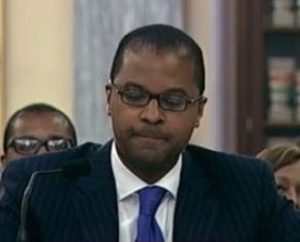The U.S. Senate, by voice vote, has confirmed Geoffrey Starks to serve as a commissioner on the Federal Communications Commission for a term through June 2022.
At the same time, it voiced its approval for an additional term through December 2023 for FCC Commissioner Brendan Carr.
“The agreement to pair and confirm these nominees finally gives us a full FCC to decide important questions about spectrum management, the deployment of broadband to underserved communities, and building next generation wireless networks,” said U.S. Sen. John Thune (R-S.D.), chairman of the Senate Committee on Commerce, Science, and Transportation. “I congratulate Geoffrey Starks and Brendan Carr on this Senate action allowing them to turn their attention toward work benefiting the public.”
The Commerce Committee approved the nomination of Starks on June 20, 2018.
First confirmed to the FCC on August 3, 2017, the Commerce Committee most recently approved Carr’s nomination for a second term on January 18–nearly one year ago.
However, a hold was placed on Carr over issues tied to rural broadband subsidies.
Federal Communications Commission Chairman Ajit Pai released the following statement after the U.S. Senate confirmed Starks as an FCC Commissioner and Commissioner Carr for a full term:
“I congratulate Geoffrey on his Senate confirmation. He brings a wealth of experience and expertise, including having served most recently as Assistant Chief in the Enforcement Bureau. During his confirmation hearing, I was excited to hear him highlight the need to expand rural broadband and the power of telemedicine. I look forward to working with him and having a fellow Kansan on the Commission.
“I also congratulate Brendan on his confirmation to a full term. Brendan has done tremendous work on a number of issues, including his leadership on wireless infrastructure modernization. He has also been a staunch advocate for rural broadband deployment, particularly for precision agriculture and advancements in telemedicine.”





